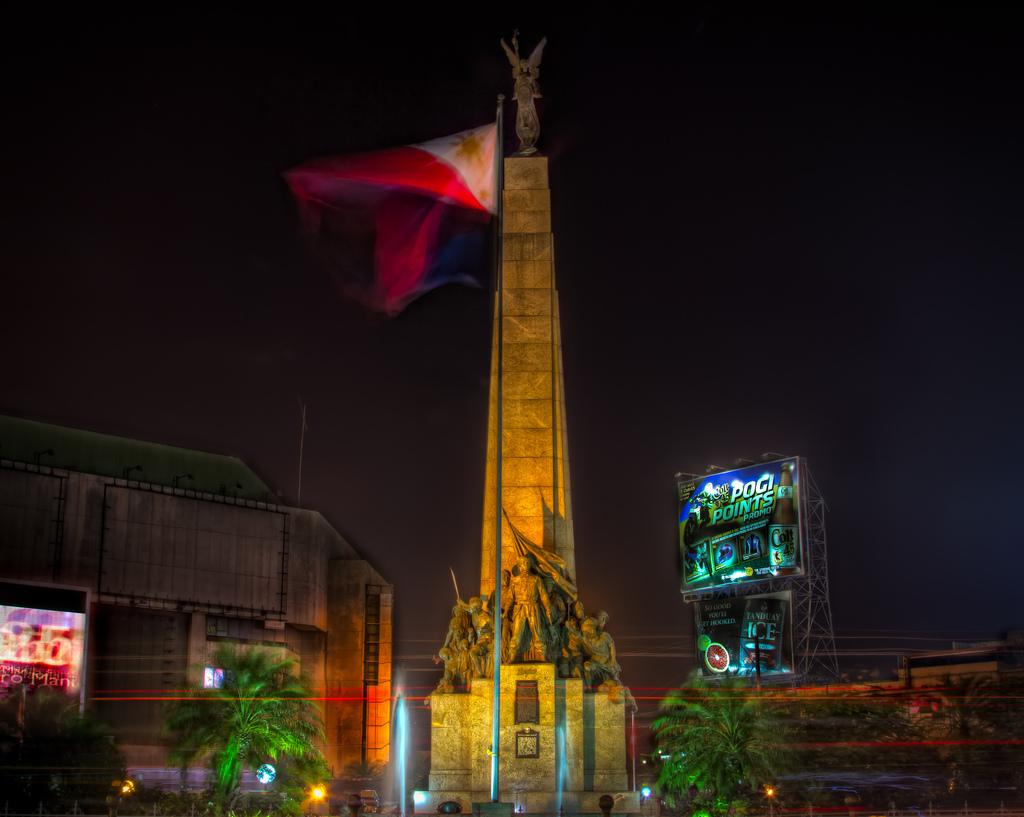
Filipinos have shown their patriotism and courage throughout the ages as shown by the many heroes who have given up their lives in the name of freedom, and perhaps the Filipino who is best known for his bravery is Andres Bonifacio. For his unparalleled legacy and sacrifices for Philippine independence, there have been many tributes to him, but probably the most well-known is the Andres Bonifacio Monument in Caloocan.
Andres Bonifacio Monument is dedicated to the lifework of Gat. Andres Bonifacio, the staunch Philippine hero known for his role in inciting the Revolutionary War against the Spanish colonizers. It was created by Guillermo E. Tolentino, one of the National Artists of the Philippines.
In the 1930s, the area where the monument now stands was a large open area. With the monument standing at the end of the Avenida and the beginning of the Manila North Road, the structure greets any visitor coming from the north. The road heading west of the monument is Samson Road, named after the Katipunero who was the cabeza of Barrio Pugad Lawin Balintawak, where the “Cry” took place.

Before the 1930s there was no monument impressive enough to honor the Great Plebeian, as Bonifacio was called. All that existed were busts of the hero. A monument which used to stand at the Cloverleaf, an interchange of the Manila North Expressway, was not in honor of Bonifacio but dedicated to the heroes of 1896. The original plaque read: “A los Heroes de 1896.” That plaque is now lost and replaced with “Bonifacio” and the statue was relocated in front of the Vinzons Hall at the University of the Philippines in Diliman, Quezon City. It later became the symbol of Caloocan City. Standing taller than Rizal Monument at Luneta, the monument is usually mistaken to mark the site of the First Cry which actually took place in the vicinity of the Cloverleaf.
Though Bonifacio had been long recognized as one of the greatest heroes of the Philippines, it was only in 1921 when he was given formal recognition. On February 9 of that year the Philippine legislature enacted Act No. 2946 proclaiming November 30 of each year as Araw ni Bonifacio and observing it as a national holiday.
The move to build a national monument for Andres Bonifacio was led by former Katipuneros, particularly Bonifacio’s friend and comrade, Guillermo Masangkay. On February 23, 1918, Act No. 2760 was passed by the Philippine Legislature approving the erection of a national monument in memory of Andres Bonifacio. Eight years later, on 29 August 1930, a jury created to select the best design for a monument to honor the Great Plebeian convened. It was headed by Architect Andres Luna de San Pedro and was composed of sculptor Vicente Francisco and Architect Tomas Mapua. Painter and Director of the UP College of Fine Arts Fabian dela Rosa was supposed to preside in the deliberation but later declined to ensure fairness when he learned that one of his colleagues from his college was one of the competitors.
The chosen design was National Artist Guillermo Tolentino's design which consists of a 45-foot pylon topped by the winged figure of victory. At its base is a platform-like structure with figures symbolizing the causes of the Philippine Revolution. The pylon is composed of five parts which correspond to the five aspects of the Katipunan-Kataastaasan, Kagalanggalang na Katipunan ng mga Anak ng Bayan (KKK). The monument stands on a base in the shape of an octagon whose eight sides symbolize the first eight provinces placed under martial law for revolting against Spain and the eight rays in the Philippine flag. There are three steps leading to the monument, representing the three centuries of Spanish rule. The monument has become Caloocan City's most famous landmark.
For his many contributions to our history as people, the illustrious legacy of Andres Bonifacio will live on, and It is hoped that the Andres Bonifacio Monument will continue to remind us of the same spirit of courage and determination for generations to come.










